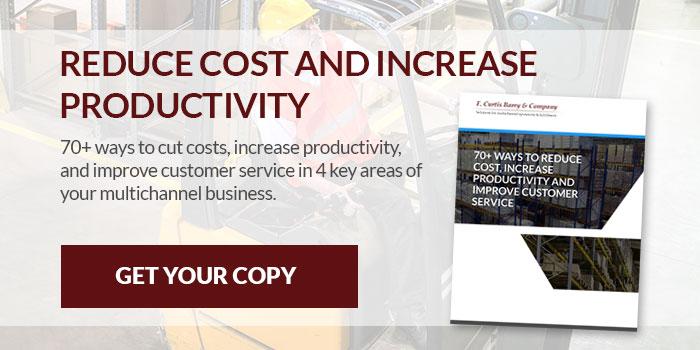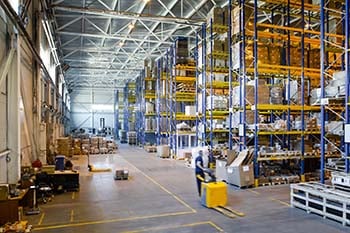In our benchmarking studies with omnichannel and e-commerce businesses, we find the cost of shipping is by far the #1 fulfillment expense. In most companies, shipping expense exceeds the sum of all other fulfillment costs including direct and indirect payroll, benefits, facilities, utilities and packing supplies.
Parcel shipping growth will continue to rise at a rate of 17%-28% each year between 2017 and 2021, and by 2020, same-day delivery will drive up logistics costs as a percentage of revenue by 50%, according to recent analysis by Gartner.
In our blog, 20 Things to Consider When Picking A Shipping Software System, we discussed critical factors to consider in your shipping system study. Benefits of today’s shipping software system include rate shopping, preparation of international documentation, analysis of shipping data and enterprise-wide control from multi-locations including DCs, stores, and suppliers. In our systems consulting work we have found these systems help control the accelerated shipping costs.
Many WMS software providers do not have plans to develop and support their own functionality, choosing to partner with standalone systems providers integrated to their application. Multi-Carrier parcel management is becoming critical as a standalone system or integrated into a Transportation Management System (TMS).
Read: “How to Develop a Cost Effective, Customer Service Oriented Shipping Strategy”
For manufacturers and wholesalers entering the direct marketplace, small parcel shipping is dramatically different from shipping solutions they use in their core businesses, and full function shipping systems can greatly benefit.
11 Areas of Savings Resulting from Using Shipping Systems
Your freight carriers’ invoices will give you helpful information you’ll need to identify costs and estimate the savings. Here are 11 areas of savings, when taken in total, we believe many companies can achieve an attractive return on investment (ROI):
1. Best-way shipping
- Selection of the best appropriate parcel carrier from among all contracted carriers should be based on order characteristics (e.g. weight, dimensions), delivery rules (e.g. service levels, delivery time and delivery zone), considering the cost differences between carrier offerings.
- How will this function decrease your freight costs?
- Will it make some service plans and zones more profitable?
2. Faster package throughput
- Increase the throughput of packages per hour processed in facilities through elimination of manual input; streamlining process steps; preparation of all labels and documents including international shipping.
- Results will include reduced labor cost and less shipping stations.
3. Parcel consolidation and zone skipping
- You can combine multiple parcel shipments into one LTL shipment to lower your total cost. Zone skipping is an example. This involves combining a large number of parcel shipments and moving them to a cheaper zone (such as U.S. Postal Service bulk mail centers) where last-mile parcel delivery is completed.
4. Cartonization
- Cartonization of the parcel is typically estimated in the TMS but is not finalized until the final rating, manifesting and labeling is determined by the WMS.
- How will cartonization change your shipping costs by reducing dunnage and space in shipping cartons?
5. DIM weight calculation accuracy
- Shipping systems can reduce unexpected costs caused when your system calculates dim weight differently from a carrier’s system.
- An audit of your DIM weight calculation should give you data to make an estimate from.
6. Address errors
- Using address correction software can reduce error costs from incorrect addresses, non-deliverable addresses and residential addresses incorrectly identified as commercial.
7. Carrier compliance
- Identify the costs to your business for vendor compliance and maintenance. Enterprise systems that are vendor certified by all major carriers can reduce costs.
- Consider compliance for label and document formats; updates to zip code and zone charges and country regulations; international documentation for commercial invoices, shipper export declaration and certificates of origin.
- It can also reduce documentation errors and incorrect rates which delay deliveries and increase costs.
8. Customer package tracking
- Enterprise shipping systems can decrease contact center support “WISMO” calls (“Where is my order?”), reducing labor and telephone costs.
- Integration with customer’s mobile devices provides a self-serve function.
9. Reduce IT costs
- You can reduce the IT costs of developing and maintaining shipping and manifesting applications including customized integrations; carrier rate changes by service level and country; system upgrades; and functionality upgrades and 24/7/365 vendor support, if needed.
10. Scalability
- You can add shipping locations without impeding growth.
- Bring all freight under one system control - all shipping points including warehouses, stores, office locations, factory or distributor sites for inbound shipments and drop shipping.
- Controlling all shipping with one system, you will realize best way shipping functions, improved freight costs and achieve better discounts.
11. Smarter ongoing freight analysis
- Gain access to all package characteristics and shipping data to understand location shipping profiles; product shipping characteristics and costs; and give greater information to negotiate rates with carriers.
Enterprise shipping systems are a major way to reduce costs today and control them in the future. There is an attractive ROI for many companies. The payback will depend on complexity of the operations.





SHARE